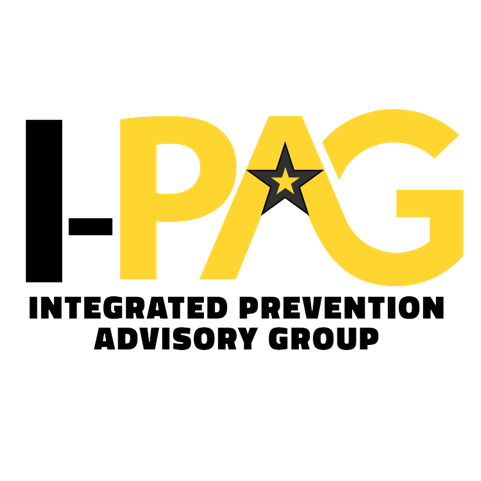
I-PAG Fact Sheet
Objective:
The Army is making substantial efforts to further develop its prevention capabilities through the Integrated Prevention Advisory Group (I-PAG), in accordance with our ”People First” priority and the Secretary of the Army’s goal to reduce harmful behaviors across the force. Our people are our greatest strength, and leaders must foster an Army culture and command climate built on trust. More than 1,200 new I-PAG members will have expertise in subjects such as public health surveillance, health promotion, social science, behavioral science, implementation science, program evaluation, quantitative and qualitative methodologies, and statistical analytic techniques. Around 680 individuals will be posted at Headquarters, Department of the Army, Army Commands, Army Service Component Commands, Direct Reporting Units, Commanders at echelon (Brigade Combat Team/Brigade equivalent) and the Army Reserve. The National Guard Bureau will establish its own preventive workforce for units in the 54 states, territories and the District of Columbia, with approximately 325 I-PAG personnel assigned to the Army National Guard.
Download I-PAG Fact Sheet
Quick Facts:
Established: 2022 | Employees: Approx. 1,200 | Website: www.ArmyResilience.army.mil/IPAG
The key activities to bolster protective factors that help prevent sexual assault, self-harm, domestic violence/intimate partner violence, child abuse and workplace violence will be integrated into the prevention workforce.
Capital Structure and Investment Highlights:
The Army is introducing a public health systems approach to prevention that focuses on mitigating risk and strengthening protective variables to decrease stressors that can lead to unhealthy behaviors. The military is making a significant financial contribution to this new workforce to ensure that it is led by experts and informed by relevant data.
Phase I Locations:
- Fort Cavazos (formerly Fort Hood) (FORSCOM)
- Fort Riley (FORSCOM)
- Fort Sill (TRADOC)
- Hawaii (Schofield Barracks, 25th ID; USARPAC)
- South Korea (Camp Humphreys, Eighth Army; USARPAC)
Phase II Locations:
- Fort Liberty (FORSCOM)
- Joint Base Lewis McCord (FORSCOM)
- Fort Bliss (FORSCOM)
- Fort Campbell (FORSCOM)
- Fort Carson (FORSCOM)
- Fort Stewart (FORSCOM)
- Fort Drum (FORSCOM)
- Fort Johnson (FORSCOM)
- Fort Irwin (FORSCOM)
- Fort Moore (TRADOC)
- Fort Leonard Wood (TRADOC)
- Fort Jackson (TRADOC)
- Fort Eisenhower (TRADOC)
- Fort Gregg-Adams (TRADOC)
- USAREC- Fort Knox (TRADOC)
- Fort Novosel (TRADOC)
- Fort Leavenworth (TRADOC)
- Fort Huachuca (TRADOC)
- Presidio of Monterey (TRADOC)
- Joint Base Langley Eustis (TRADOC)
- Grafenwoehr (USAREUR-AF)
- Stuttgart (USAREUR-AF)
- Wiesbaden (USAREUR-AF)
- Ansbach (USAREUR-AF)
- Kaiserslautern (USAREUR-AF)
- Chievres (USAREUR-AF)
- Vicenza (USAREUR-AF)
- Redstone Arsenal (AMC)
- Aberdeen Proving Ground (AMC)
- Detroit Arsenal (AMC)
- Rock Island Arsenal (AMC)
- Fort Wainwright (USARPAC)
- Camp Zama (USARPAC)
- Camp Okinawa (USARPAC)
- Joint Base Elmendorf-Richardson (USARPAC)
- Fort Meade (MDW)
- Fort Belvoir (MDW)
- Joint Base Myer-Henderson Hall (MDW)
- Army Futures Command
- ARCYBER
- Army Central Command
- Joint Base San Antonio (ARNORTH/MEDCOM)
- Carlisle Barracks (USAWC)
- US Military Academy
- INSCOM
- USASOC
- White Sands Missile Range (ATEC)
Contact: I-PAG
I-PAG fact sheet:
▶ Integrated Prevention Advisory Group (I-PAG)
Find more helpful fact sheets:
